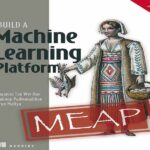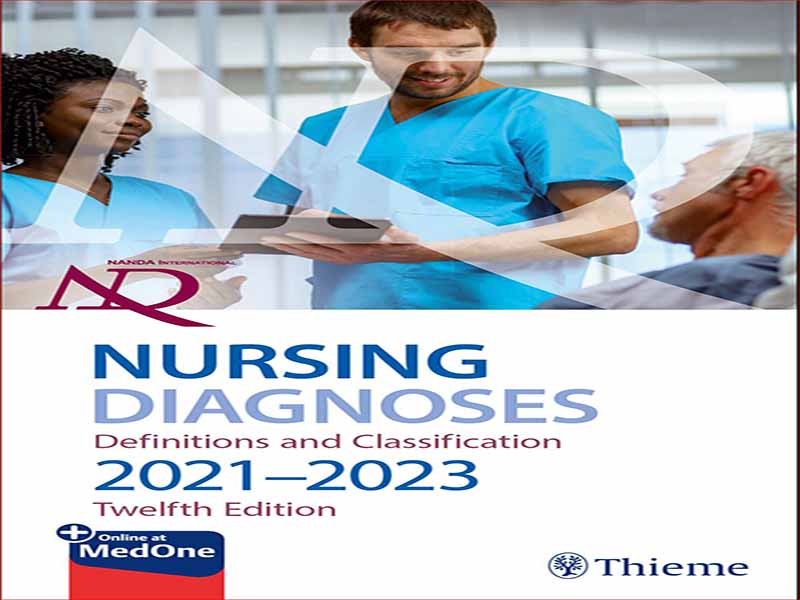- عنوان کتاب: NURSING DIAGNOSES
- نویسنده: T. Heather Herdman
- حوزه: پرستاری
- سال انتشار: 2021
- تعداد صفحه: 590
- زبان اصلی: انگلیسی
- نوع فایل: pdf
- حجم فایل: 6.80 مگابایت
سال جهانی پرستار و ماما با نبرد با COVID-19 آغاز شد. من نمی توانم به اندازه کافی از متخصصان مراقبت های بهداشتی تشکر کنم که علیرغم کمبود تجهیزات حفاظتی، گاهی از بیماران مراقبت می کنند. من این را می نویسم زیرا تأثیر COVID-19 در سراسر جهان ادامه دارد. امیدوارم تا زمانی که این متن را می خوانید، درمان ها و اقدامات پیشگیرانه موثری ایجاد شده و در دسترس همگان باشد. چند وقت پیش، پرستاری که در خط مقدم می جنگید از من پرسید: “از کدام تشخیص پرستاری برای بیماران کووید-19 استفاده کنم؟” این سوال من را به یادآوری نیاز به تأکید مکرر بر معنای تشخیص پرستاری انداخت. مهمتر از همه، بیماران با تشخیص پزشکی یکسان لزوماً پاسخ های انسانی یکسانی (تشخیص های پرستاری) ندارند. به همین ترتیب، بیمارانی که ژنوتیپ یکسانی از عفونت کروناویروس دارند، لزوماً پاسخهای انسانی یکسانی ندارند. به همین دلیل است که قبل از ارائه مراقبت های مناسب برای هر بیمار، پرستاران باید یک ارزیابی پرستاری انجام دهند و پاسخ های منحصر به فرد او (تشخیص های پرستاری) را شناسایی کنند. حتی در مواقعی مانند آنچه امروز با آن روبرو هستیم، پرستاران باید آنچه را که به طور مستقل در مورد بیماران و خانوادههایشان تشخیص و درمان میکنیم، که با تشخیصهای پزشکی متفاوت است، شناسایی کنند. اگر پرستاران به درستی تشخیصهای پرستاری بیماران مبتلا به کووید-19 و خانوادههایشان را ثبت کرده باشند، در آینده نزدیک، ما قادر خواهیم بود از منظر بینالمللی، اشتراکات و تفاوتها را در واکنشهای انسانی آنها شناسایی کنیم. در این نسخه 2021-2023، نسخه دوازدهم، طبقه بندی 267 تشخیص را با اضافه شدن تشخیص های جدید ارائه می دهد. هر تشخیص پرستاری محصول یک یا چند نفر از داوطلبان بین المللی NANDA (NANDA-I) ما بوده است و اکثر آنها یک پایه شواهد تعریف شده دارند. هر تشخیص جدید توسط اعضای کمیته توسعه تشخیص (DDC) ما که بهعنوان بازبینهای اولیه منصوب شدهاند، و توسط کارشناسان محتوا، قبل از دریافت تأییدیه DDC بررسی و اصلاح شده است. این تأییدیه DDC به این معنی نیست که تشخیص در همه کشورها یا مناطق عملی “تکمیل” یا “آماده استفاده” است. همه ما می دانیم که عملکرد و مقررات پرستاری از منطقه ای به منطقه دیگر متفاوت است. ما امیدواریم که انتشار این تشخیص های جدید مطالعات اعتبار سنجی بیشتر در نقاط مختلف جهان را برای دستیابی به سطح بالاتری از شواهد تسهیل کند.
The International Year of the Nurse and Midwife began with a battle with COVID-19. I cannot thank healthcare professionals enough who are caring for patients despite, at times, the lack of protective equipment. I am writing this as the impact of COVID-19 is continuing around the world. I hope that by the time you read this text, effective treatments and preventive measures have been developed and are available to everyone. A while back, a nurse fighting on the frontline asked me, “Which nursing diagnosis should I use for COVID-19 patients?” This question reminded me of the need to repeatedly emphasize the meaning of nursing diagnosis. Most importantly, patients with the same medical diagnosis do not necessarily have the same human responses (nursing diagnoses). Likewise, patients with the same genotype of coronavirus infection do not necessarily have the same human responses. That is why, prior to providing proper care for each patient, nurses must conduct a nursing assessment and identify his/her unique responses (nursing diagnoses). Even at times like those we are facing today, nurses need to identify what we independently diagnose and treat related to patients and their families, which are different from medical diagnoses. If nurses have properly documented the nursing diagnoses of patients with COVID-19 and their families, then in the near future, we will be able to identify commonalities and differences in their human responses, from an international perspective. In this 2021–2023 version, the Twelfth Edition, the classification provides 267 diagnoses, with the addition of new diagnoses. Each nursing diagnosis has been the product of one or more of our many NANDA International (NANDA-I) volunteers, and most have a defined evidence base. Each new diagnosis has been reviewed and refined by our Diagnosis Development Committee (DDC) members assigned as primary reviewers, and by content experts, prior to receiving DDC approval. This DDC approval does not mean the diagnosis is “completed” or “ready to be used” across all countries or practice areas. We all know that practice and regulation of nursing varies from region to region. It is our hope that publication of these new diagnoses will facilitate further validation studies in different parts of the world, to achieve a higher level of evidence.
این کتاب را میتوانید بصورت رایگان از لینک زیر دانلود نمایید.
Download: NURSING DIAGNOSES



































نظرات کاربران